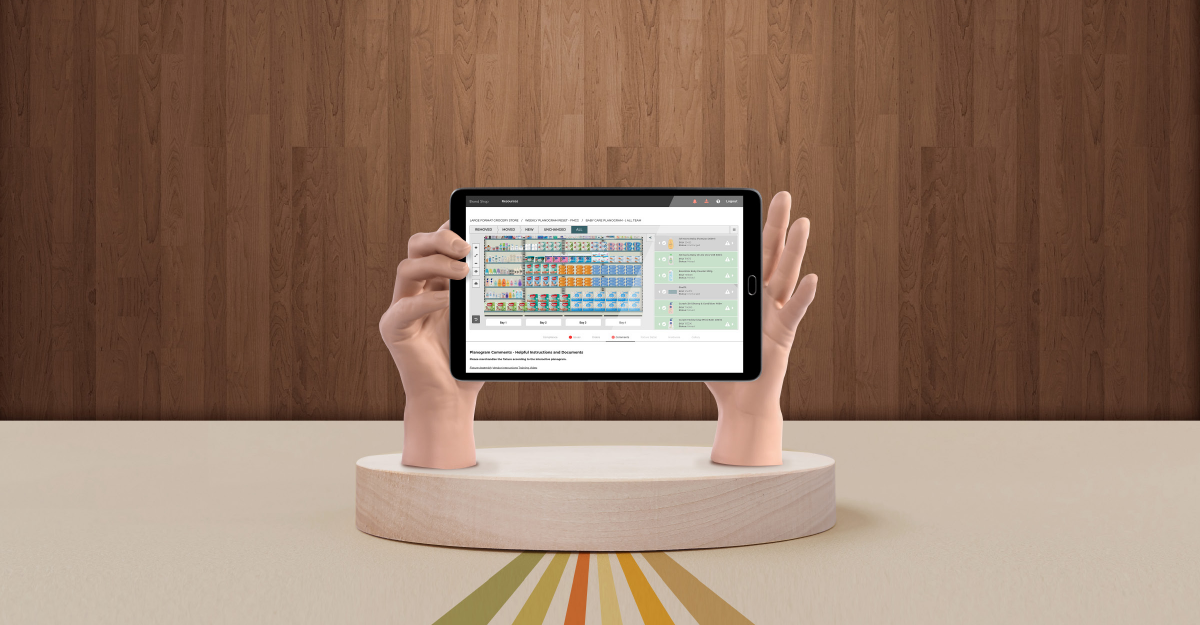Visual merchandising has always had the same goal: Strategically promote products, drive revenue, and create a unique store experience.
However, the role and execution have drastically changed in the last 50 years. Visual merchandisers need to adapt to the always-changing consumer behaviors, technological advancements, and the need for more immersive shopping experiences.
If you’re not keeping up, you’re losing revenue.
The Start of Strategic Visual Merchandising
The paper planogram was created in the 1970s by department store chain Kmart. The company developed paper planograms to optimally plan and place products throughout the store to drive an unmatched customer experience.
At this time, displays were limited to simple product arrangements on shelves or counters.
However, as competition grew, retailers realized the importance of strategic visual presentation and its effect on sales and customer loyalty.
Window displays became a powerful tool as well to attract the right customers. Retailers began understanding and leveraging even more creative elements, such as lighting, props, and mannequins to tell a compelling visual story and engage customers.
This creative insight began to spread to in-store strategies. Retailers started experimenting with signage and fixture arrangements to enhance the shopping experience.
As time went on, visual merchandisers became more aware of strategic design and effective communication. They even began incorporating “psychological elements” into their store plans.
In 2023, we refer to the “psychological elements” as in-store marketing campaigns affecting customer behavior.
A lot changed over a short period. There’s a ton to keep up with in the merchandising industry. Retailers must keep up to continue to attract engaged customers.
The idea that “each experience needs to be unique” holds a lot of power. It also has a lot of responsibility for visual merchandisers.
Innovative Retail Solutions
As the retail landscape evolves, innovative retail solutions play a pivotal role in transforming the visual merchandising industry.
Visual merchandising tools, like One Door, automate localization for store-specific outcomes. This ensures unique store-based experiences for customers can ease any additional planning challenges.
Additionally, proper communication empowers in-store employees to feel confident setting up new plans. This helps visual merchandisers ensure in-store compliance and minimizes room for error.
Analytics is another key feature for effective visual merchandising. It helps teams understand where the in-store experience truly impacts customers and can drive sales.
With visual merchandising tools, like One Door, merchandising efforts are streamlined in one, simple platform. One Door centralizes all of your visual merchandising data.
Retailers can manage and distribute store plans that are automatically tailored to each region (down to the individual store level), ensuring consistent branding and customer experiences.
One Door streamlines communication between headquarters and stores, reducing the time and effort required for manual coordination.
The platform allows retailers to create and visualize planograms digitally, enabling them to experiment with different product placements, signage, and displays before implementation. This empowers retailers to make data-driven decisions, enhancing the effectiveness of their visual merchandising strategies.
Visual merchandising has evolved significantly, adapting to consumer preferences, technological advancements, and the need for immersive shopping experiences.
Innovative retail solutions, like One Door, play a crucial role in transforming the retail space by providing a cloud-based platform that streamlines visual merchandising operations, enhances planning capabilities, and leverages data analytics.
As the retail industry continues to evolve, it is evident that these solutions will shape the future of visual merchandising, enabling retailers to create engaging experiences that drive customer satisfaction and boost sales.
Moving Forward: Cloud-Based Planograms
Want to learn more about modern planogramming? Check out Designed to Sell: Visual Merchandising for Modern Retailers where Tom Erskine, CEO of One Door, discusses how stores require innovative solutions to succeed:
